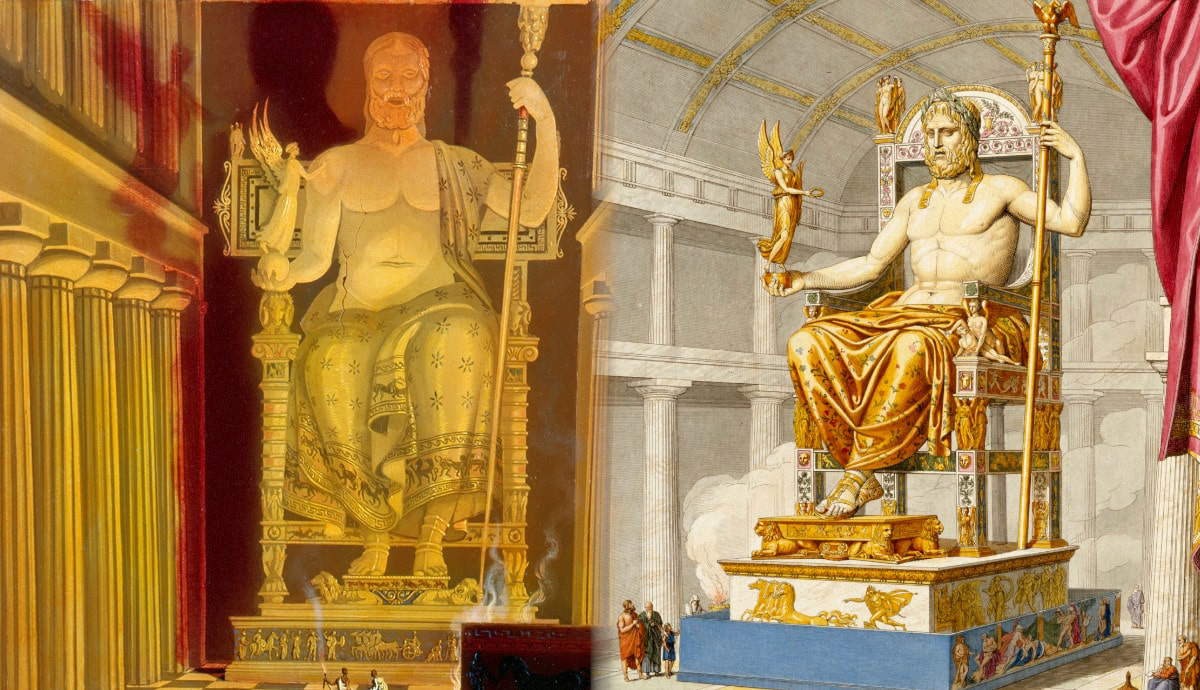A Monumental Achievement in Art and History
For the first time in 2500 years, the chryselephantine statue of Zeus has been magnificently rebuilt on a reduced scale. Originally housed in the Temple of Zeus in Olympia, this awe-inspiring sculpture was crafted in 433 BC by the legendary sculptor Phidias, one of antiquity’s most esteemed artists. The reconstruction, a culmination of three years of meticulous research and craftsmanship, was spearheaded by the founder of the Kotsanas Museum of Ancient Greek Technology. This incredible project has been brought to life with the utmost precision and documentation, drawing from ancient sources and archaeological discoveries.

The Original Masterpiece
The original statue of Zeus, one of the Seven Wonders of the Ancient World, stood majestically in the Temple of Zeus, capturing the divine presence of the king of the gods. Phidias’ work was celebrated for its grandeur and intricate detailing, which combined gold and ivory to create a statue that was both resplendent and revered. The pose of Zeus, as depicted on the coins of Elis, was a significant reference for the reconstruction, ensuring that the new statue faithfully mirrored the original’s imposing yet serene posture.
The Reconstruction Process
The journey to recreate this ancient masterpiece was both challenging and rewarding. The founder of the Kotsanas Museum dedicated three years to this endeavor, systematically researching and studying historical texts and archaeological findings to ensure accuracy. The dimensions of the statue were carefully calculated based on descriptions by the ancient scholar Kallimachos, while the intricate decorations were inspired by the detailed accounts of the traveler and geographer Pausanias.

Detailed Decorations and Craftsmanship
One of the most remarkable aspects of the reconstructed statue is the attention to detail. The statue features 173 shapes that adorn the base, the piederia (footrest), and the rest of the throne, all meticulously crafted to reflect the original decorations described by Pausanias. These highly detailed ornaments are not just embellishments but are integral to capturing the essence and splendor of Phidias’ creation.
Bringing the Past to Life
The rebuilt statue of Zeus stands as a testament to the ingenuity and skill of ancient Greek artisans, as well as the dedication of modern scholars and craftsmen. It bridges the gap between the ancient and modern worlds, allowing us to appreciate the artistic achievements of our ancestors in a tangible form. This reconstruction is more than just a replica; it is a revival of cultural heritage and a celebration of the timeless beauty of ancient Greek art.

Conclusion
The chryselephantine statue of Zeus, meticulously reconstructed after 2500 years, is a monumental achievement that honors the legacy of ancient Greek artistry. Through diligent research and masterful craftsmanship, the Kotsanas Museum of Ancient Greek Technology has brought back to life a piece of history that once awed the world. This reconstruction not only provides a glimpse into the grandeur of the ancient past but also inspires future generations to cherish and preserve our rich cultural heritage.

